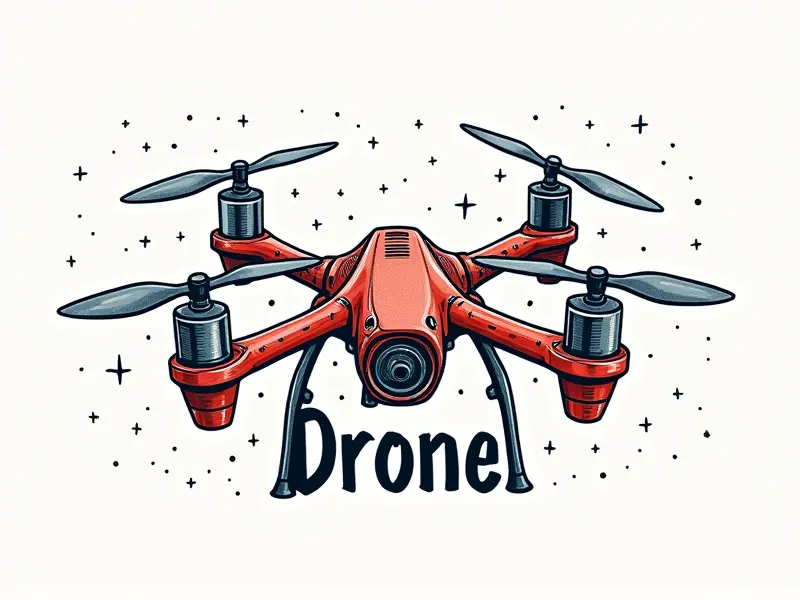Max altitude for drones?

Legal and Practical Max Altitude for Drones
The maximum altitude a drone can legally fly varies by country, region, and specific regulations. In the United States, the Federal Aviation Administration (FAA) sets strict guidelines under which drones must operate no higher than 400 feet above ground level when flying in uncontrolled airspace. This limit is designed to ensure safety for both manned aircraft and people on the ground.
Practically speaking, achieving this altitude requires a well-maintained drone with sufficient battery capacity and propeller efficiency. However, various factors such as weather conditions, terrain, and air density can affect your drone's ability to reach its maximum potential height.
Understanding Your Drone's Maximum Altitude
The first step in maximizing your drone’s flight altitude is understanding the technical specifications of your model. Every drone has a designated maximum altitude based on its design capabilities, including battery power and propulsion system efficiency. For instance, high-end drones like DJI Mavic Pro can reach up to 400 feet under ideal conditions.
Manufacturers often provide detailed documentation about their products, which includes information regarding optimal performance parameters such as flight time, speed, and altitude limits. Familiarizing yourself with these details will help you operate your drone more effectively within legal constraints.
Achieving the Highest Possible Drone Altitude
To achieve maximum altitude, it’s crucial to optimize several aspects of your drone operation:
- Weather Conditions: Avoid flying in high winds or extreme temperatures as these can significantly reduce performance.
- Battery Maintenance: Ensure that the battery is fully charged and not overused. A fresh, well-maintained battery will provide better power output for longer flights at higher altitudes.
- Propeller Efficiency: Clean and inspect propellers regularly to maintain optimal performance. Drones with damaged or dirty propellers may struggle to reach their maximum altitude.
Top Factors Affecting Drone Max Altitude
A number of factors influence how high a drone can fly:
- Air Density: Lower air density at higher altitudes means less resistance for the propellers, but also reduced lift.
- Battery Capacity: Larger batteries provide more power, enabling drones to climb higher and longer.
- Propeller Design: Efficiently designed propellers can maximize thrust and minimize energy loss.
Exploring Max Altitude Limits for Drones
The concept of maximum altitude is not just about reaching the highest point possible but also ensuring safety and compliance with regulations. The FAA, for example, mandates that drones must be flown below 400 feet in uncontrolled airspace to avoid interfering with manned aircraft operations.
Additionally, some regions may have specific restrictions based on local laws or military installations. Always check the latest guidelines before flying your drone to ensure compliance and safety.
How High Can RC Drones Fly?
The question of how high an RC (Remote Controlled) drone can fly depends largely on its design specifications and operational conditions. Most consumer-grade drones are limited by their battery capacity, which typically allows them to reach around 400 feet above ground level.
However, professional or custom-built drones designed for high-altitude operations may exceed this limit through specialized components like larger batteries and more powerful motors.
Legal and Safe Drone Height Limits
To fly a drone legally and safely, it’s essential to adhere to established height limits. In the United States, the FAA requires that drones remain below 400 feet in uncontrolled airspace unless specific permission is granted for higher flights.
Safety considerations include avoiding restricted areas such as airports, military bases, and national parks where drone operations are prohibited or heavily regulated.
Maximizing Your Drone's Flight Altitude
To maximize your drone’s flight altitude:
- Select High-Quality Components: Use batteries with high capacity and propellers designed for efficient lift.
- Maintain Regular Upkeep: Keep all parts clean, lubricated, and free from damage to ensure optimal performance.
- Leverage Technology: Utilize GPS and other navigation systems that help in maintaining steady altitude control.
Maximum Altitude for RC Quadcopters
RC quadcopters, popular among hobbyists and professionals alike, typically have a maximum flight ceiling of around 400 feet due to battery limitations. High-end models like DJI Phantom series can achieve slightly higher altitudes with optimized settings.
To push the limits further, consider upgrading components such as using larger capacity batteries or more efficient propellers designed for high-altitude performance.
FPV Racing Drone Altitude Cap
First-Person View (FPV) racing drones are engineered for speed and agility rather than altitude. While they can reach impressive heights, their primary focus is on maneuverability at lower altitudes. Most FPV racing drones have a maximum flight ceiling of around 300 feet due to the need for quick response times in competitive settings.
Optimizing battery capacity and propeller efficiency remains key even for these specialized models.
RC Helicopter Max Flight Ceiling
RC helicopters, unlike quadcopters or FPV drones, often have a different set of limitations when it comes to maximum altitude. The design principles that govern helicopter flight dynamics mean they typically operate within lower altitudes due to rotor efficiency and control stability.
The average RC helicopter can reach up to 300 feet under optimal conditions, but this varies widely depending on the model’s specific capabilities.
Conclusion
Navigating the complexities of drone altitude limits involves balancing legal requirements with practical considerations. By understanding your drone's specifications and optimizing its components for maximum performance, you can safely achieve impressive flight heights while adhering to regulatory guidelines.
Whether you're flying a quadcopter, FPV racing drone, or RC helicopter, ensuring compliance with local laws and maintaining optimal operational conditions will enhance both the safety and enjoyment of your aerial adventures.

